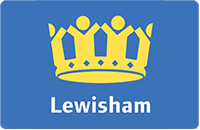Feed yourself Fuller

Nutritionist Grace Scott MSc BSc
Understanding satiety and which foods can keep us feeling fuller for longer is beneficial; it can help us to control how much we eat, level out our blood sugar levels and maintain a healthy weight in the long-term. Knowing this information is ever more important in today’s society, where the temptation to overindulge in sugary or fatty convenience food is increasingly abundant and badly planned diets leaves us filling deprived, hungry and wanting more.
Satiety is a feeling of fullness following a meal and it is this feeling which plays an important role in how much we eat. Feeling ‘satiated’ or full is likely to result in a longer period of time without eating, and may even lesson the amount we eat in the next meal. Of course, there are factors other than our physiological signals that affect our eating behaviour (emotions and social triggers, for example), but understanding which foods might offset that appetite is a good place to start.
Here are a few top tips which I think you might find handy, I certainly have!
Eat more high protein foods: It is well established that under most conditions, protein as a macronutrient is more satiating than carbohydrates or fat, suggesting that a higher intake of this at the expense of the other macros might promote satiety and facilitate weight loss.
Top Tip! Fish and plant proteins (peas, pulses, seeds) are also lower in saturated fat than other protein sources (red meat), so try to heighten intakes of these for weight loss.
Eat more high fibre foods: wholegrain breads, cereals, pulses, fruits and vegetables tend to satiate more than lower fibre foods by taking longer to digest and releasing energy slowly into the body
Top Tip! Vegetables have lower levels of sugar and vegetable skins contain high amounts of fibre!
The Energy Density of foods might also affect satiety; foods with a lower energy density provide less energy per gram of food, so we are able to eat these in higher quantities without consuming too many calories.
Low energy density foods:
- Fruits and vegetables
- Soups
- Pulses
These can fill you up and are also high in fibre, bonus!
Good luck, Grace
Read more Blogs by Grace



